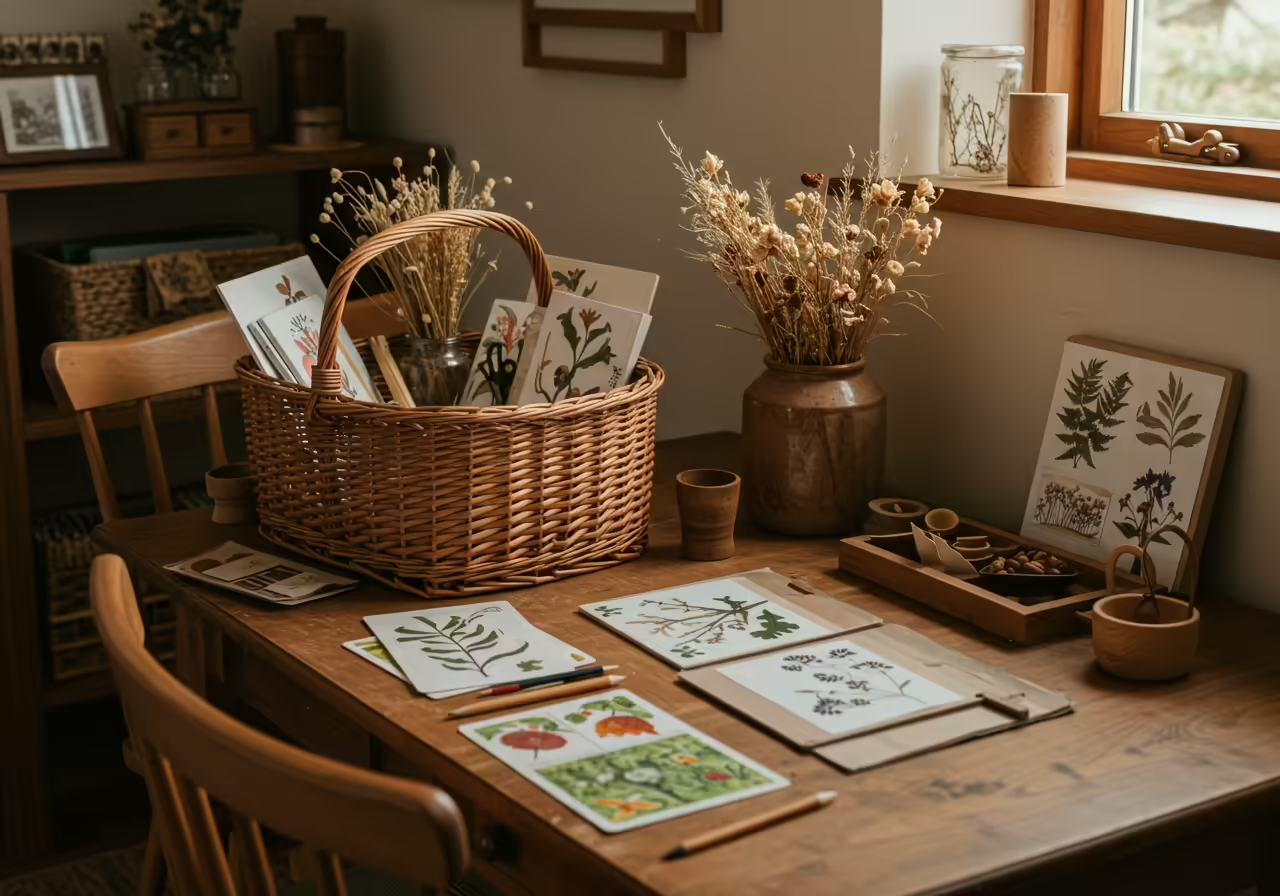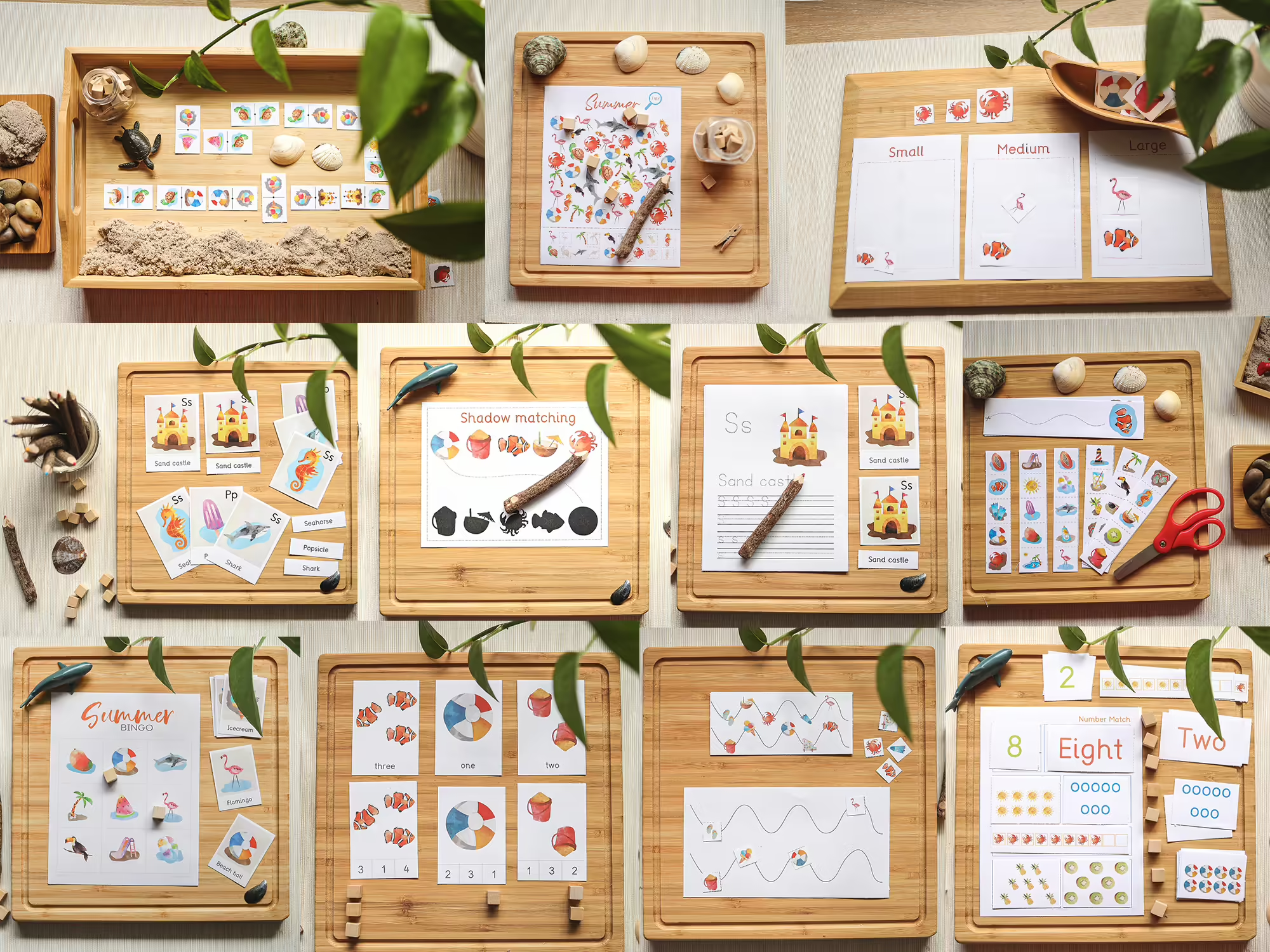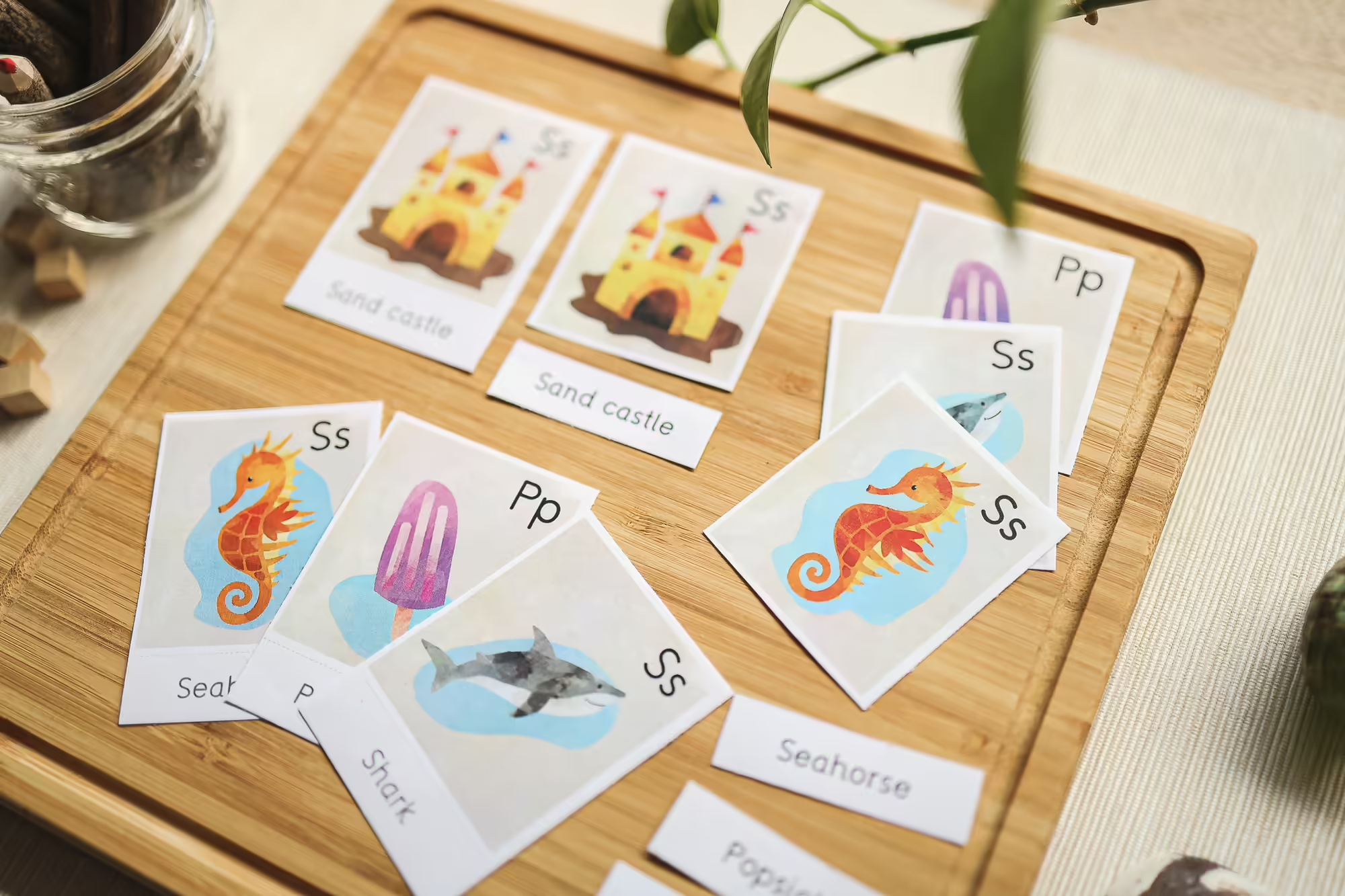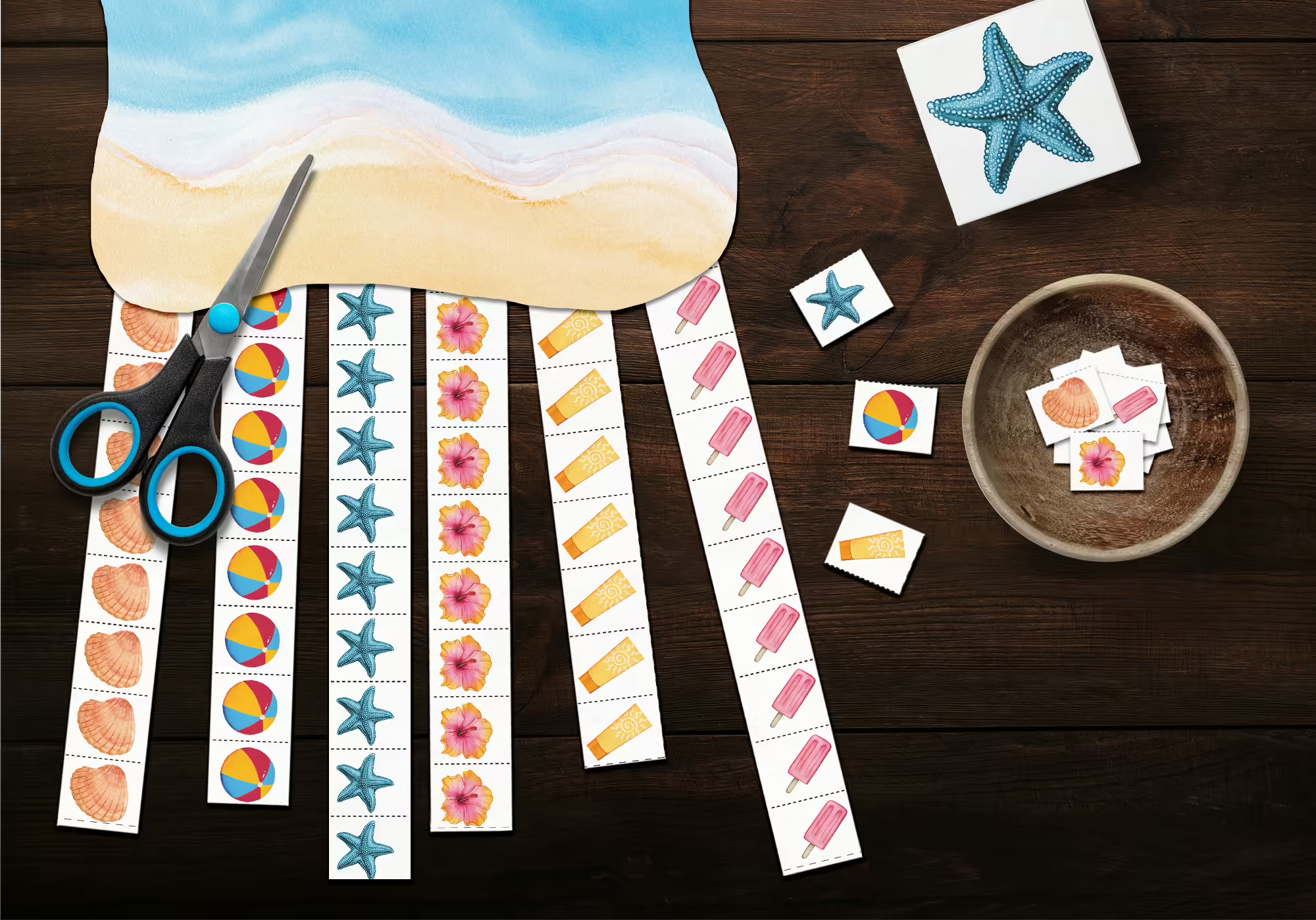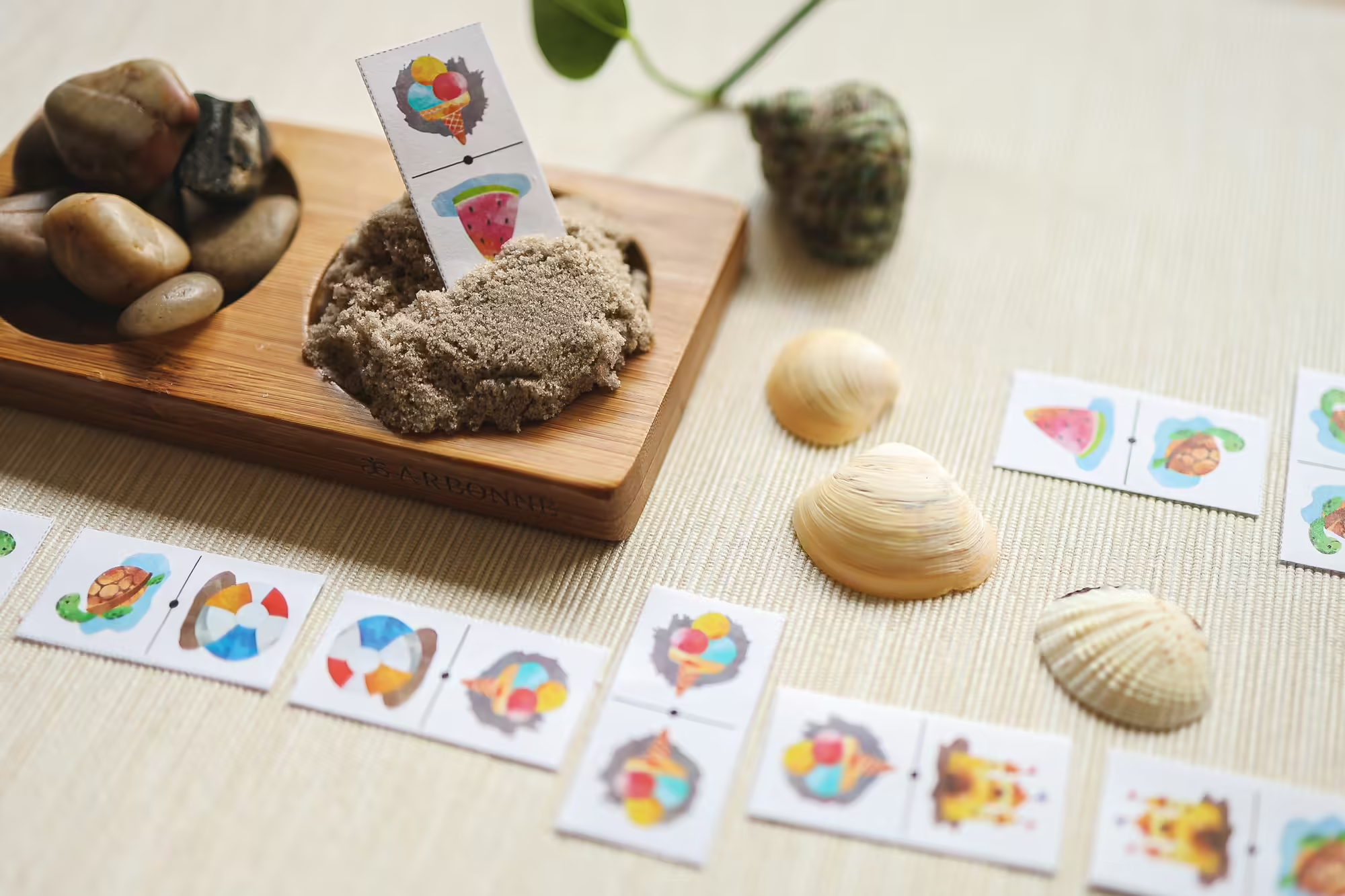Last Tuesday morning, I found my daughter completely absorbed in teaching her stuffed animals about butterflies using field guides and nature specimens from our learning basket. She was happily engaged in her own little world while I finally drank a warm cup of coffee.
This wasn’t a miracle morning – it was just another day with our family’s morning basket routine.
The Simple Concept Behind Morning Baskets
A morning basket is essentially a container filled with engaging learning materials that your family can use however works best for you. Some families gather around it for story time and discussions. Others use it as a launching pad for independent exploration. Many switch between both approaches depending on the day.
The magic isn’t in the basket itself – it’s in having interesting, accessible materials ready when your children’s minds are fresh and curious. Think of it as your family’s learning toolkit, always at hand when inspiration strikes or when you need a peaceful activity transition.
What surprised me most about our morning basket wasn’t how much my daughter learned, but how it naturally adapted to whatever our family needed each day. Stressed mornings called for calming activities. Energetic days brought out creative challenges. Rainy afternoons invited cozy reading sessions.
Why Morning Baskets Work for Different Family Needs
The Only Child Advantage: Families with one child often discover that morning baskets provide the intellectual variety and stimulation that naturally occurs in larger families. Without siblings to spark conversations or provide different perspectives, the carefully chosen materials become conversation starters and learning catalysts.
Multi-Child Dynamics: In families with several children, morning baskets create opportunities for natural teaching moments between siblings while also giving each child space to pursue their own interests. The shared materials often lead to collaborative projects or interesting discussions.
Working Parent Solutions: When mornings feel rushed, having a go-to collection of engaging activities helps children start their day purposefully while parents handle necessary tasks. The routine becomes an anchor that brings calm to potentially chaotic hours.
Homeschool Integration: Many homeschooling families use morning baskets as gentle transitions into formal learning or as enrichment that covers subjects often overlooked in structured curricula.
The beauty lies in how the same basket serves multiple purposes throughout a single week, adapting to your family’s changing needs and energy levels.
What Actually Goes in These Baskets
The contents depend entirely on your children’s ages, interests, and your family’s goals. Our basket has evolved dramatically over the years, growing with our children’s changing fascinations and capabilities.
Books form the heart of most families’ collections – picture books for browsing, poetry for reading aloud, reference books for answering curious questions, or chapter books for independent readers. The key is choosing materials that invite exploration rather than requiring specific outcomes.
Hands-on learning materials might include puzzles, building sets, art supplies, or science tools like magnifying glasses and small specimens. Many families love including seasonal items that connect to nature’s changes or upcoming celebrations.
Some families focus on creative expression with quality art supplies, writing prompts, or musical instruments. Others emphasize discovery with maps, atlases, and exploration tools. There’s no universal “right” collection – only what captures your children’s imagination and serves your family’s rhythms.
The Unexpected Benefits We Discovered
While we initially started our morning basket hoping to create calmer mornings, the real benefits surprised us. Children develop longer attention spans that carry over into other activities throughout the day. They become more confident in choosing their own learning adventures and better at engaging deeply with materials.
Perhaps most importantly, learning became something joyful rather than obligatory. When children associate education with choice, beauty, and family connection, they develop intrinsic motivation that lasts far beyond any specific lesson or activity.
The ripple effects extended beyond learning. Our mornings became more predictable and peaceful. My daughter learned to settle into focused activities independently. Family conversations became richer as she brought questions and discoveries from her explorations.
Adapting to Your Family’s Unique Style
Connection-Focused Families often use morning baskets as gathering time – reading stories together, discussing interesting topics, or working on collaborative projects. The basket provides materials for shared experiences that strengthen family bonds.
Independence-Seeking Families design their collections for self-directed exploration, choosing materials that children can engage with successfully on their own. This gives parents time for other tasks while children develop autonomy and confidence.
Flexible Families switch between approaches based on daily needs – sometimes gathering for group activities, other times allowing individual exploration, often blending both within the same session.
The approach grows and changes with your family. What works for toddlers evolves for preschoolers, then adapts again for elementary ages. The consistency lies not in specific activities but in the rhythm of engaging with interesting materials during your family’s optimal learning times.
Starting Your Own Morning Basket Journey
Beginning doesn’t require elaborate planning or expensive materials. Start by observing when your children naturally seem most alert and curious, then gather a few materials that match their current interests.
Choose items that invite rather than require – books that can be browsed or read aloud, materials that spark questions, activities that can be extended or simplified based on your child’s mood and energy.
The most successful morning baskets grow organically from your family’s real interests and needs rather than from someone else’s ideal plan. Trust your instincts about what engages your children and supports your family’s goals.
Curious about the science behind why morning learning works so well? Discover the fascinating research in Morning Learning: The Science Behind Why Kids Learn Better in the Morning. Ready to design your own routine? Get practical strategies in How to Create Your Own Morning Learning Routine.
Related Reading:
- Morning Learning Science - Understanding optimal learning times
- Creating Your Morning Routine - Practical implementation strategies


